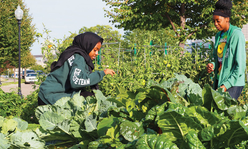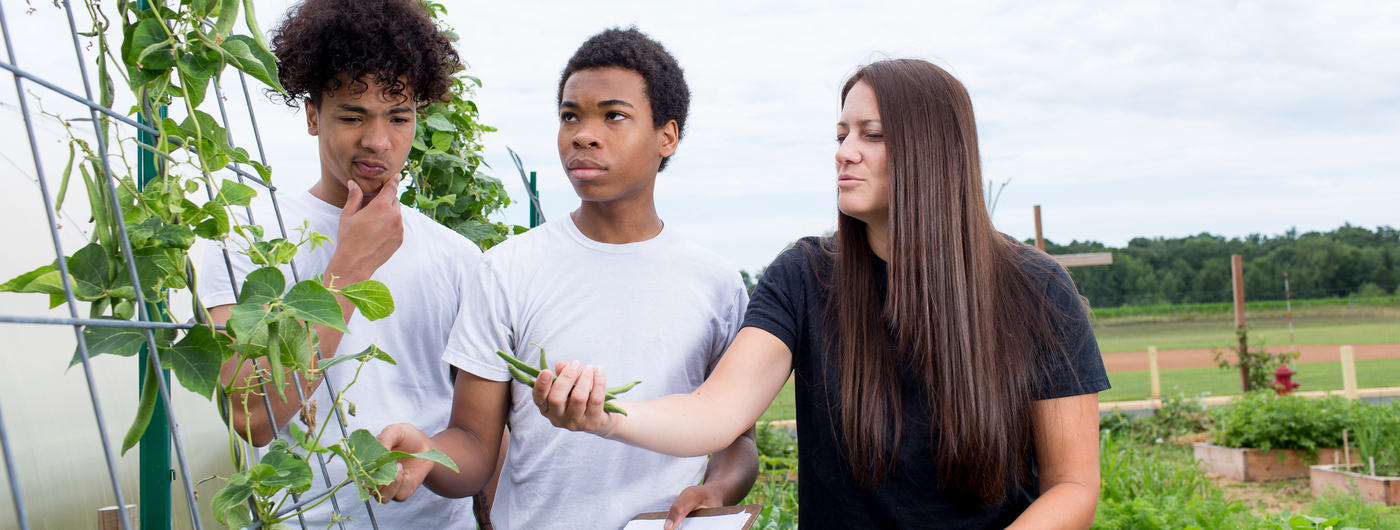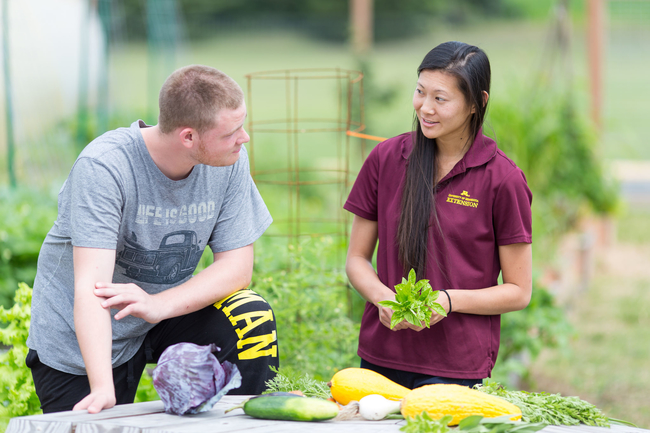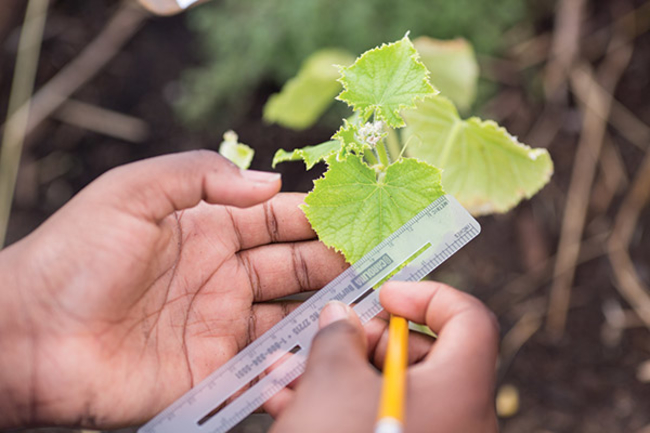Schoolyard gardens plant seeds of better health and active learning.
University of Minnesota Extension Master Gardener volunteers are trained in horticulture by the University of Minnesota so they can help communities solve problems. They work at the local level to provide schools with the know-how to design, maintain and teach in a schoolyard garden.
It’s Wednesday morning and the kids at Crossroads School and Vocational Center in St. Francis are sitting attentively in class, knowing what comes next if they do the work expected of them.
“The Master Gardeners come every Wednesday,” says Crossroads Principal Jay Powell. “The kids know they’re coming.”
Powell’s students have significant challenges, including some who are living at a nearby residential treatment center. Extension Master Gardeners can get their hands dirty with the kids, teaching while not having to be the authority figure.
“Relationships are tough for these kids, so it’s neat to see the bond as they work side by side in the planters,” says Powell.
The schoolyard garden is a place to advance the quest to learn math, science, healthy living and more in an outdoor living laboratory. Master Gardeners helped design the site in 2015, including multiple raised beds and a deer-proof fence.
“Our garden this year is going to produce a lot of pollen and nectar for the bees and butterflies,” says Dave Berger, the science teacher at Crossroads who is also a Master Gardener in Anoka County. “The kids want to help those pollinators.”
Feeding ready learners
Rachel Beehler, Extension Master Gardener volunteer, says showing students they can grow food is her passion. “We come to the school in January or February to start seeds indoors with the kids,” says Rachel Beehler, a Master Gardener. “During summer school and fall we’re harvesting and cooking.”
Lisa Wong, an Extension educator in Supplemental Nutrition Assistance Program Education (SNAP-Ed), finds that the learning that takes place in the garden makes a big difference. “When the kids know where the food is coming from—when they get that familiarity with it—they are more likely to try something new.”
“This strategy increases healthy food access for K-12 students in 198 schools across Minnesota,” says Terri Swartout, who works across state agencies to improve health through the Statewide Health Improvement Partnership. “Master Gardeners make it happen at the ground level with the students.”
In most counties, Master Gardeners are led, trained and supported by a coordinator employed by Extension. In Anoka County, Lynne Hagen leads 100 active volunteers. “Crossroads is a great example,” she says. “There are so many opportunities to include horticulture in school and after-school programs.”
Linked to learning
“Master Gardeners are well aware of the demands on today’s teachers,” says Betsy Massie, Extension Master Gardener volunteer in Hennepin County. “Our goal is to help those teachers extend their classrooms to the garden while providing lessons linked to the Minnesota Academic Standards.”
The principal at Crossroads agrees. “Our staff have embraced the use of the garden across the curriculum,” says Powell. “We all see how the students’ minds have expanded.”
In Berger’s science class, for example, kids compare soil and air temperature and the growth rate of plants. They measure, record and graph the results. Woodworking classes built the raised beds, and art classes added garden sculptures.
A student named Jacob says Master Gardeners helped him learn things he likes. “They taught me about plants and when to pick them. They taught me how to check the rain gauge and water, and how to map out garden grids too.”
Positive outcomes have increased the demand for Master Gardener volunteers. Massie recently helped plan and deliver a schoolyard gardens conference for 300 volunteers, teachers, school administrators and others at the University of Minnesota Landscape Arboretum. Partners through the Minnesota Schoolyard Garden Coalition are working together to develop curriculum kits for volunteers.
Massie says, “Collaboration between Master Gardeners and teachers is growing, and Minnesota children are the beneficiaries.”
Are you interested in becoming a Master Gardener or making a gift to support schoolyard gardens? Visit Master Gardener information on our website.
Starting small
Not every school or youth program is ready for a big garden. “Volunteers have to think creatively and use whatever resources they have readily available,” says Kelsey Wulf, coordinator for Extension Master Gardener programs in Otter Tail County. “Once people see the positive effects of even a small garden, support for the program will grow.”
Here are a few starter ideas Wulf has seen Master Gardener volunteers try with success:
- Tomatoes and peppers grown in coffee cans for salsa
- Seed-starting lesson providing plants kids can grow in a home or community garden
- Perennial flowers planted along a peaceful schoolyard pathway
- Building bug hotels to learn about beneficial insects
Kids give back
Schoolyard gardens feed families in need. Master Gardeners help Minnesota students grow and donate 13,000 pounds of vegetables to food shelves in a single season.
Related stories

Green Garden Bakery
Master Gardener volunteers and Extension partners inspire kids start a healthy desserts business.

The Rutabaga Project
The Rutabaga Project’s goal is to craft community-based solutions to make produce more accessible and affordable.






